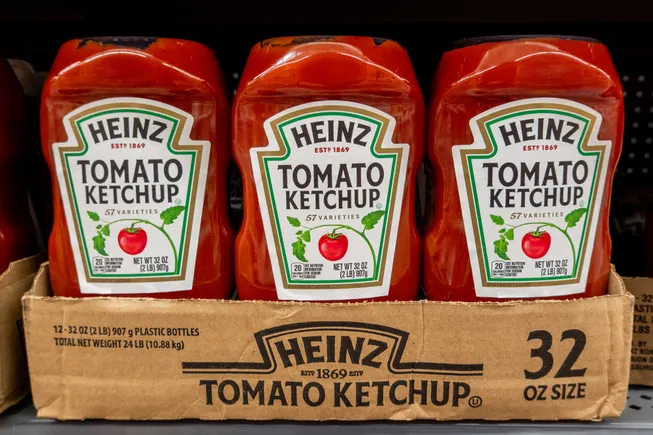Kraft Heinz is a prime example of how large corporations are leveraging cutting-edge technologies like artificial intelligence (AI) and machine learning to transform their supply chains. The primary goal of these initiatives is to create an efficient, fully integrated supply chain that provides complete visibility from production to delivery. The principles and strategies that Kraft Heinz is implementing can serve as valuable lessons for small and medium-sized businesses (SMBs) looking for ways to enhance their own operations through automation.
At its core, the strategy of Kraft Heinz hinges on a proprietary control tower, named Kraft Heinz Lighthouse, which has been developed in collaboration with Microsoft. This digital tool offers real-time visibility and insights, not just across the supply chain but also within plant operations and distribution channels. For SMBs, a similar control tower model can be adapted by employing platforms such as Make or Zapier to create workflows that collect and analyze data from various functions in the business. Setting up such an automation can begin with identifying the various data points that provide the most value—like inventory levels, customer orders, or shipping updates—and then integrating these data sources into a centralized dashboard.
The shift from reactive to proactive supply chain management is another significant transformation that Kraft Heinz has embraced. To achieve this, SMBs can utilize automation platforms to set up alerts and triggers based on specific conditions. For example, if inventory levels fall below a predetermined threshold, an alert could automatically notify the purchasing team to reorder stock. This not only enhances responsiveness but also minimizes the risk of stockouts, which can directly impact customer satisfaction and sales.
AI technologies are also crucial in optimizing production efficiency. Kraft Heinz has developed its own internal AI engine to streamline manufacturing processes. SMBs can start small by implementing existing machine learning tools that analyze production data to identify inefficiencies or bottlenecks in operations. For instance, using tools like Google Cloud AutoML, companies can input historical performance data to create forecasting models. Setting up a system for continuous feedback and adjustment can enhance accuracy over time, thus improving overall production efficiency.
The application of machine learning in product quality is another valuable lesson from Kraft Heinz. The company uses AI to automate the inspection of cucumbers, which significantly improves the quality of its pickles. SMBs can adopt a basic version of this concept by utilizing image recognition tools accessible through platforms like Microsoft Azure or Amazon Rekognition to enhance quality control in their production lines. A practical step would be to train an image recognition model with images of good and defective products to automate the sorting process—a worthwhile investment that can result in higher quality standards and reduced waste.
Moreover, engaging in generative AI tools can facilitate better decision-making processes in the supply chain. For instance, Kraft Heinz has piloted a tool called “PlantChat,” which gathers real-time insights from employees for informed decision-making. SMBs can replicate this by using chatbots or project management tools like Slack integrated with automation platforms to circulate information and gather real-time feedback from team members. A simple workflow might involve automating the collection of weekly feedback on operational challenges, which can help managers respond proactively and reflect real-time conditions in their strategy.
Having said that, it is crucial for SMBs to approach automation with careful consideration of both opportunities and risks. While the potential benefits of enhanced efficiency, improved quality, and proactive management are substantial, the initial investment in technology and time is an essential factor. A risk assessment should be performed prior to embarking on any automation journey, focusing on areas such as data privacy, employee training, and potential system failures. The implementation of automation should, therefore, be aligned with a risk mitigation strategy that can help safeguard against unforeseen issues.
In evaluating the return on investment (ROI) associated with these automation initiatives, SMBs should look into both qualitative and quantitative measures. Efficiency improvements can lead to cost savings, while enhanced product quality can result in increased customer satisfaction and loyalty. Tracking key performance indicators such as production rates, defect rates, and customer feedback can offer a clearer picture of the impact of the automation initiatives while helping guide future strategies.
In summary, the journey toward automation, as demonstrated by Kraft Heinz, is not just about technology but also about adopting a mindset of continuous improvement. By utilizing available tools and platforms, SMBs can implement automated solutions that enhance operational efficiency and decision-making while reducing risks and improving overall quality. This will not only align with the larger goals of enhancing customer satisfaction but will also establish a foundation for sustained growth.
FlowMind AI Insight: Adopting automation through practical tools like AI and workflow automation platforms is an achievable goal for SMBs. Starting with small, data-driven initiatives can pave the way for broader transformations that drive efficiency and improve overall business outcomes.
Original article: Read here
2025-03-17 07:00:00

